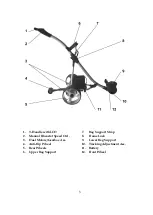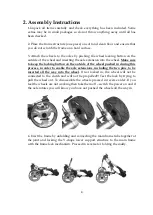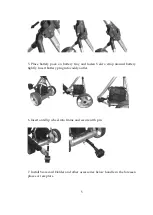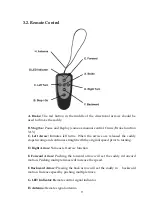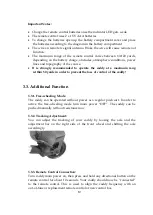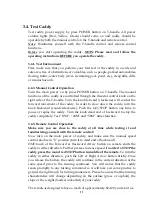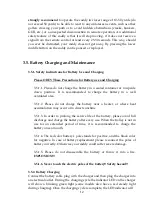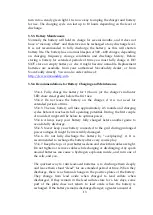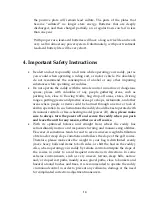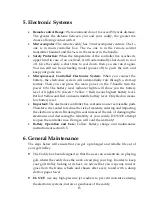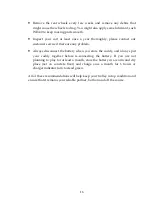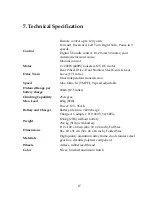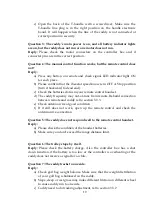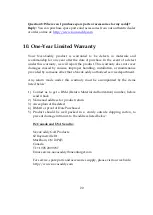
turn into a steady green light. It is now okay to unplug the charger and battery
for use. The charging cycle can last up to 10 hours depending on the level of
discharge.
3.5.3. Battery Maintenance
Normally the battery will hold its charge for several months, and it does not
have a “memory effect” and therefore can be recharged at any discharge level.
It is not recommended to fully discharge the battery, as this will shorten
battery life. The battery has a normal lifespan of 300
–
400 charges, depending
on charging frequency, storage conditions and discharge history. Before
storing a battery for extended periods of time you must fully charge it. DO
NOT store an empty battery or else it might become unusable. Replacement
batteries are available from your authorized NovaCaddy dealer, or from
NovaCaddy directly. You can also order online at:
3.5.4. Recommendations for Battery Charging and Maintenance
3.5.4.1. Fully charge the battery for 10 hours (or the charger’s indicator
LED show stead green) before the first use.
3.5.4.2. Do not leave the battery on the charger, if it is not used for
extended periods of time.
3.5.4.3. The new battery will take approximately 2-3 rounds and charging
cycles before it reaches its full operating potential. During the first couple
of rounds, it might still be below its optimal power.
3.5.4.4. Always keep your battery fully charged before another game to
avoid a fully discharge.
3.5.4.5. Never keep your battery connected to the grid during prolonged
power outages. It might be irreversibly damaged.
3.5.4.6. Do not fully discharge the battery by “overplaying” it. It is
recommended to recharge the battery after every course play.
3.5.4.7. Keep the tops of your batteries clean and check that cables are tight.
Do not tighten or remove cables while charging or discharging. Any spark
around batteries can cause a hydrogen explosion inside, and ruin one of
the cells, and you.
The quickest way to ruin lead-acid batteries is to discharge them deeply
and leave them stand “dead” for an extended period of time. When they
discharge, there is a chemical change in the positive plates of the battery.
They change from lead oxide when charged to lead sulfate when
discharged. If they remain in the lead sulfate state for a few days, some
part of the plate does not return to lead oxide when the battery is
recharged. If the battery remains discharged longer, a greater amount of
13




